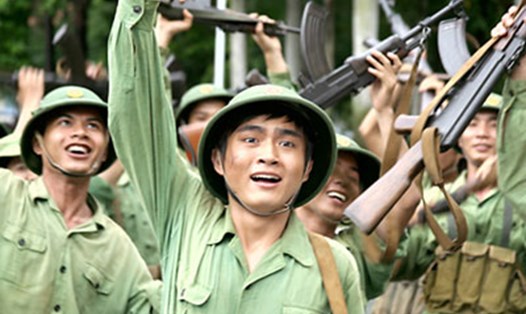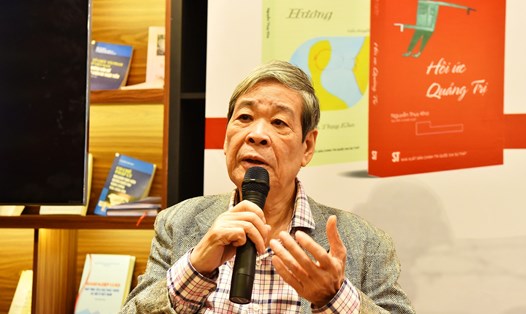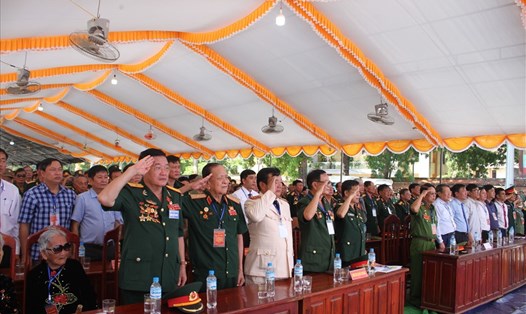After 53 years of postponement, each story, each plot of land in the ancient citadel of Quang Tri has been covered with a mysterious color, both sacred and vibrant.
Reporter of Lao Dong Newspaper had a conversation with Lieutenant Colonel Kieu Thanh Thuy - Deputy Director of the People's Army Cinema, Director of Production of the feature film "Red Rain" about the production process of the film with the theme of war with many challenges.
Historical and war films have always been considered difficult, costly, and even risky topics because they are easily controversial. What is the biggest pressure for the People's Army Cinema when starting the film project "Red Rain"?
- The People's Army Cinema has the function of researching, composing, producing, disseminating, and archiving cinematic works on the topics of military history, revolutionary war, armed forces, and building a national defense to serve the army, people, and foreign propaganda work of the army.
First of all, in the task of producing the feature film "Red Rain", the People's Army Cinema feels honored and proud to recreate an important historical period of the country.
The biggest pressure of the People's Army Cinema when implementing the film project "Red Rain" lies in the realistic and vivid recreation of historical settings and fierce battles, while conveying the noble qualities and tragic beauty of the people in the war.
Coordinating many stages, units, and partners inside and outside the Army with a long period of pre-production is also a huge pressure for Army Cinema. But we find that bringing a meaningful work is completely worth the effort.
War films always face challenges. With a small amount of money, people will criticize the rough setting, fake setting, and unreal. A lot of money will also be "squeezed" whether it is invested effectively or not. A director once said that Vietnamese war films, even those that cost a lot of money, are not necessarily good. What is your perspective on this?
- Producing a war-themed film when the country has been at peace and independent for 50 years is indeed a difficult problem not only for the film crew of "Red Rain". Because the artifacts and scenes are no longer intact as before.
Vietnamese cinema also does not have a large studio to serve the production of historical films and revolutionary wars. All details such as props, settings, equipment, weapons and equipment need to be restored to closely follow historical reality.
However, the People's Army Cinema and the film crew of "Red Rain" do not consider investing a lot of money as a decisive factor for a good film. Instead, we focus on content, emotions and humanistic values, because these are the factors that make a war film lasting.
The success of war films does not depend entirely on how much money is spent, but depends on the way of storytelling, historical authenticity, creativity in the way of setting the setting, choosing the camera angles, and using small details to recreate the atmosphere of the times, creating a feeling of closeness, authenticity, touching the emotions of the audience.
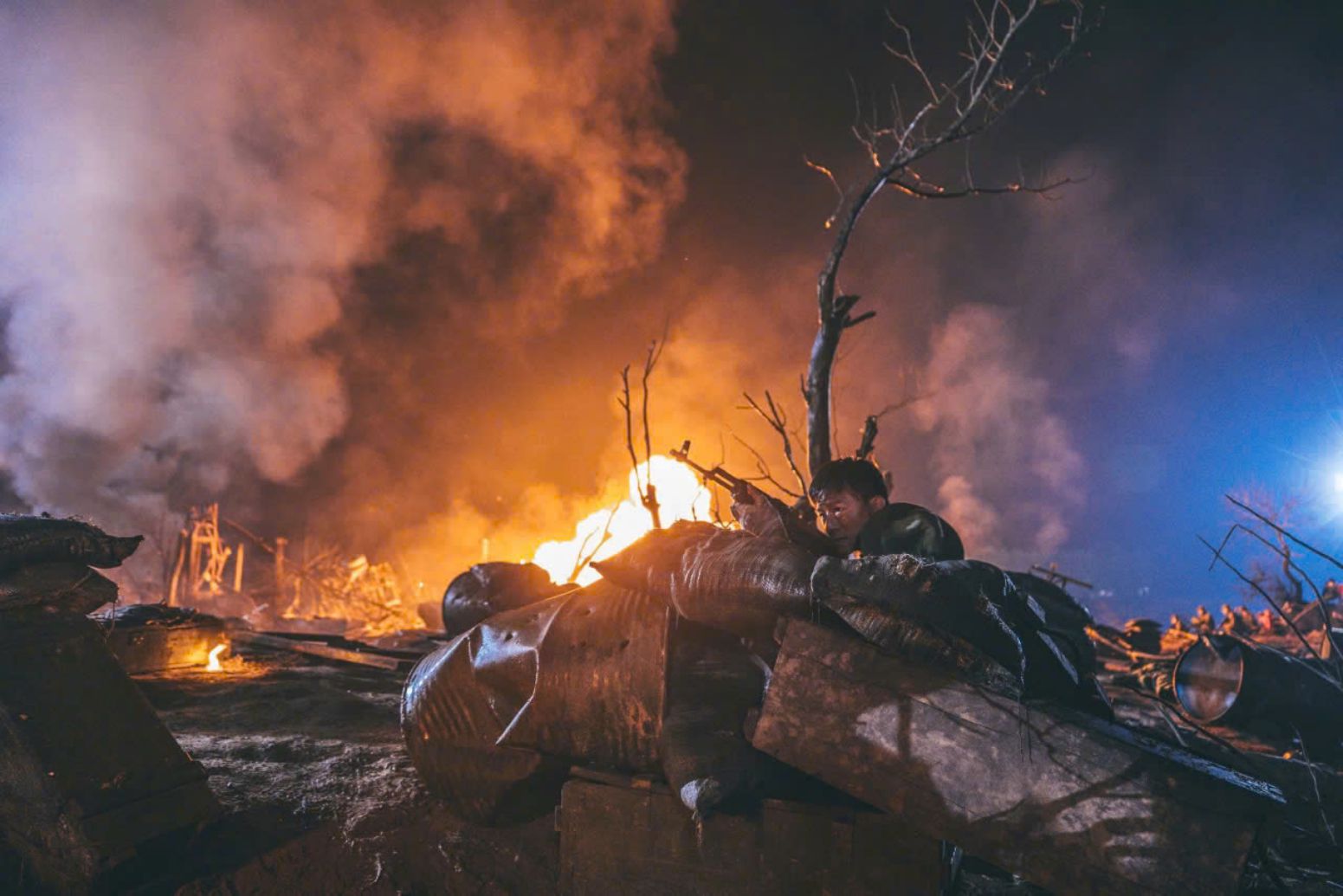
The battle in the ancient citadel of Quang Tri in 1972 has become a legend in the history of the nation. Every story in the ancient citadel is filled with blood and tears. The generation of soldiers who fell in the ancient citadel became so sacred that anyone who came to the ancient citadel, only seeing the piece of land there could cry with emotion. In the face of such a battle, what will be special about the script and production process of "Red Rain"?
- From the script of the film "Red Rain" by writer Chu Lai, Meritorious Artist Dang Thai Huyen - Deputy Director of the People's Army Cinema as director, "Red Rain" was carefully selected and nurtured by soldiers during the war and the cold war, and nurtured emotions in a special way.
We appreciate every detail in the script of Red Rain. These are the stories and honest confessions of witnesses and soldiers who fought on the Quang Tri front in 1972, Due to the limited time, the People's Army Cinema has distilled the most valuable details to depict the fierceness of war, comradeship, teamwork, and love for the homeland to help the audience better feel the loss and national pride.
With careful investment in production, and close direction from the Head of the Ministry of National Defense, the General Department of Politics, the helpful coordination of Quang Tri province and local people, with a large and professional film crew, determined to overcome all the hardships of storms, floods, weather, rivers... the film "Red Rain" promises to be not only a war film but also an immortal epic about the spirit and sacrifice of the Vietnamese people in the most difficult moments of history.
Before they can move the audience, of course, filmmakers must be the ones who are most moved. When the crew started building the "Red Rain" project, how did they read, learn and feel about the stories in the ancient citadel of Quang Tri in 1972, can you share?
- 81 days and nights of protecting the ancient citadel of Quang Tri have become a legend of the fighting spirit and will of our nation. The People's Army Cinema has produced many films about this historical period such as: "Those who keep Thanh Co", "Fire from Thanh Co"... Those films are invaluable documents about the fierceness of war and have also become an endless source of inspiration for artists in general and the People's Army Cinema in particular.
Each individual participating in the feature film project "Red Rain" understands and appreciates the losses, sacrifices, and indomitable fighting spirit of the army and people in the 81 historic days and nights of Quang Tri.
Setting foot on this historical land, from the director, actors to the crew members all feel the sacredness, because each drop of soil absorbs the sweat, tears and blood of many outstanding children who have fallen for the peace of the nation.
The historical truth about the blood and tears of an entire generation of young people left an indelible mark on the film crew. It is the touching stories, living witnesses and memories from the past that are the fuel, helping the crew recreate "Red Rain" as a deep gratitude to the previous generation and a meaningful historical lesson for today's generation.
Red Rain is not only a film but also has the responsibility to convey history to today's and future generations, it is also a message from the past to the present: The value of peace, solidarity, and national will.
Therefore, before making the audience emotional, the production crew of the film "Red Rain" must be those who understand and relive each piece of the historical story. That emotion is the motivation for us to tell it in a sincere, profound and emotional way, to bring the audience not only a film but also a historical lesson and a gratitude.
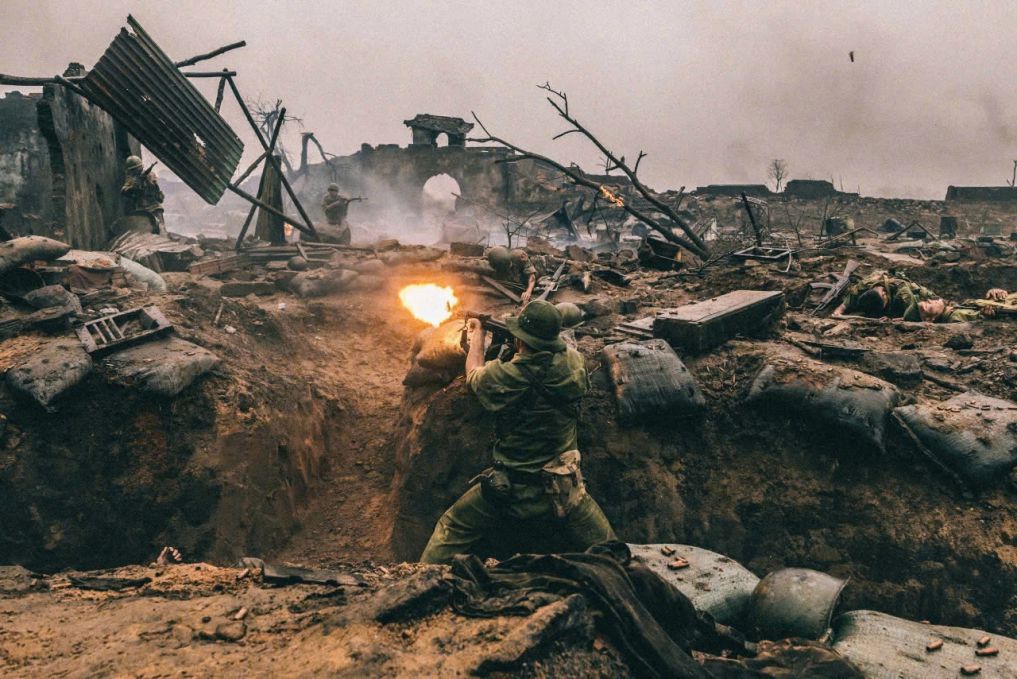
War films still have to face criticism of the unity of information given, of the way of exploiting and old-fashioned perspective on war, the way of approaching history... how did the crew choose the approach angle in "Red Rain"?
- "Red Rain" chose a new approach, sharing an objective, multi-dimensional perspective to revive the story of the battle in the ancient citadel of Quang Tri. Each perspective of the character contains stories, the thoughts behind it.
The film depicts war not only through the perspective of victory but also highlights the pain and loss of both sides.
The soldiers in the film "Red Rain" not only fight against the enemy but also face their own fear, homesickness and personal conflicts.
This portrayal makes the character more lively, beyond the model of previous war films. The film not only recreates the war from a military perspective but also exploits other colorful aspects of history, such as the roles of women, mothers, and wives during and after the war.
In particular, "Red Rain" also shares the perspective of the soldiers on the other side of the front line. The soldiers, regardless of the front line, fight for the beliefs and ideals they pursue. Because of the moment they have to face each other on the battlefield and deep in the hearts of each soldier, they do not want war.
Instead of painting perfect images, the film crew built the soldier character with authenticity, from fear and confusion to courage and resilience. From the perspective of young soldiers, mothers waiting for children, people trapped in the whirlwind of bombs and bullets or the perspective of the other side makes the film closer but also helps the audience feel that war is not only about victory and loss, but also about broken fates.





